Behind a vintage cottage on a quiet street in Petaluma, Karen Hess is stirring a pot of eucalyptus leaves. “I gathered these this morning from a tree two blocks away,” she says. “The leaves are still green now, but they’ll slowly turn the water into a fiery orange-red dye. It’ll be beautiful.”
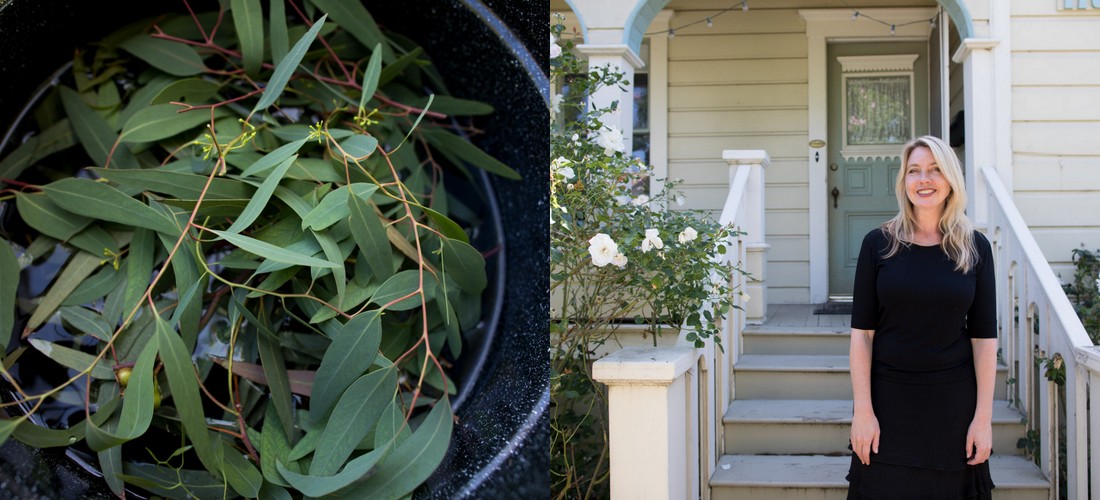
She points to other plants growing in her carefully cultivated garden. “These are hollyhocks,” she says, bending to pick up deep red flowers that have fallen to the ground. “They’ll produce a green dye. And right over here we have indigo. Its green leaves will become blue dye.” Karen puts the hollyhock blossoms into a woven basket and places it next to her collection of enamel pots and glass jars, where mysterious concoctions of plants and lichen infuse in the bright summer sun.
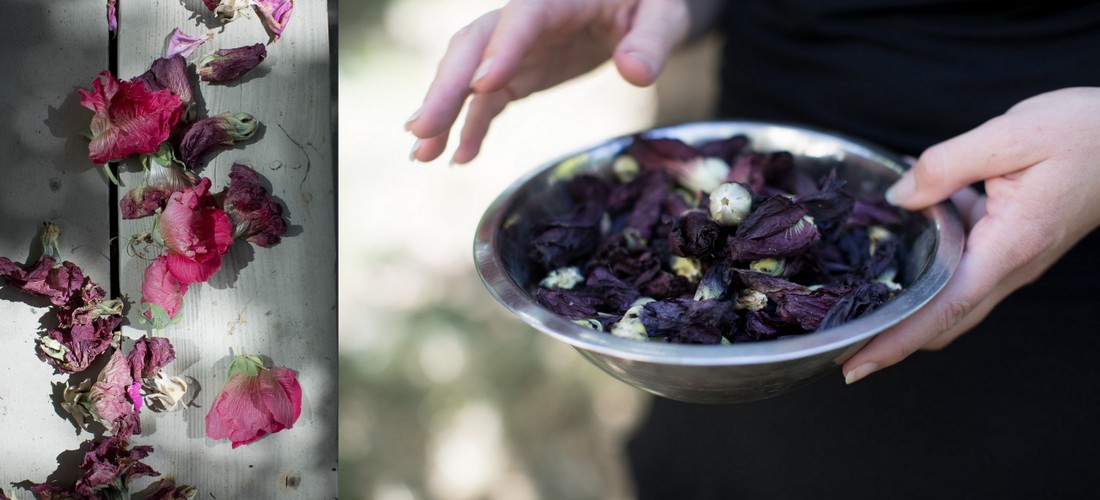
“When others think of plants, they think of their medicinal purpose as a primary identifier,” she explains. Like arnica for sprains, or marshmallow for coughs. “But I believe plants also communicate through color, especially their concealed hues.”
To uncover these hidden colors, one must be willing to engage in an intuitive, experimental process. “A very slow process,” she emphasizes, laughing. “One that thrives on the thrill of discovery.”
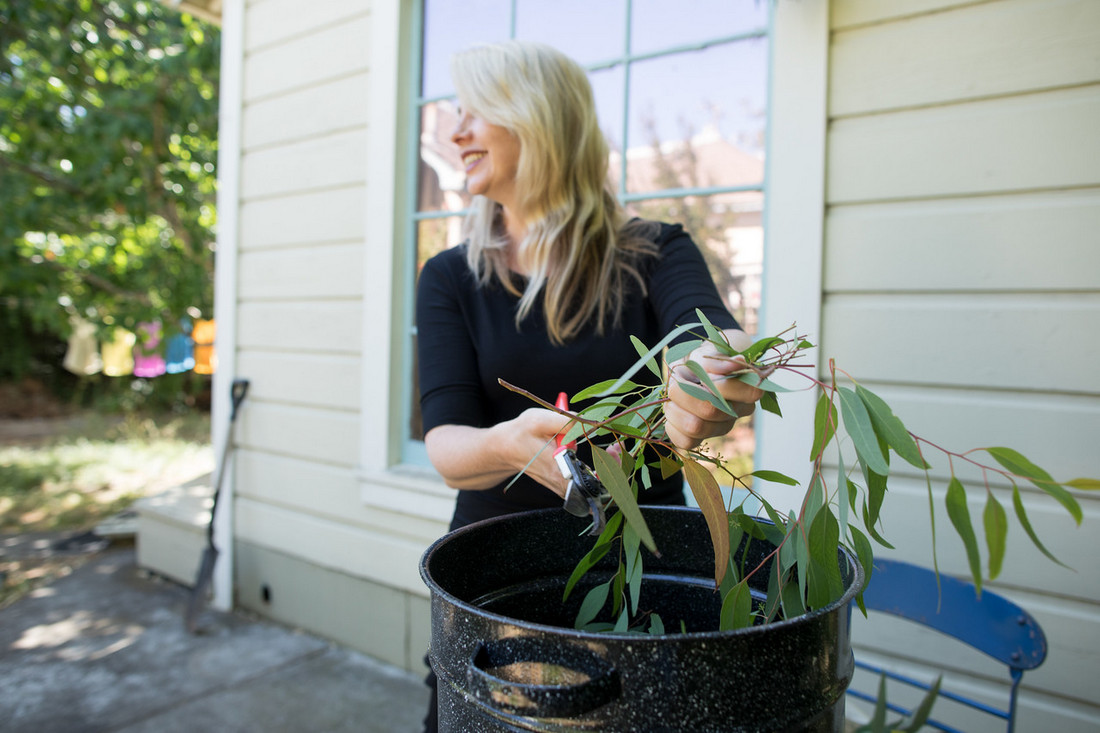
About five years ago, looking for a new creative outlet, Karen decided to create a blog about experiencing her local landscape. The more she explored, the more intrigued she became with the unique flora of her native Sonoma County. Going beyond smelling the proverbial rose, she stripped off the petals and began to discover the beauty of natural dyes. “It happened organically for me,” she says. “The focus on natural dyes arose from the land I was exploring. For much of human civilization, patterns and colors were indicative of where you came from. In some ways, ‘wear’ and ‘where’ meant the same thing in botany’s local dialect. But we’ve lost that tangible sense of place, and natural dyes are a way to bring that back. There are certain hues and plants we only have here in our region.”
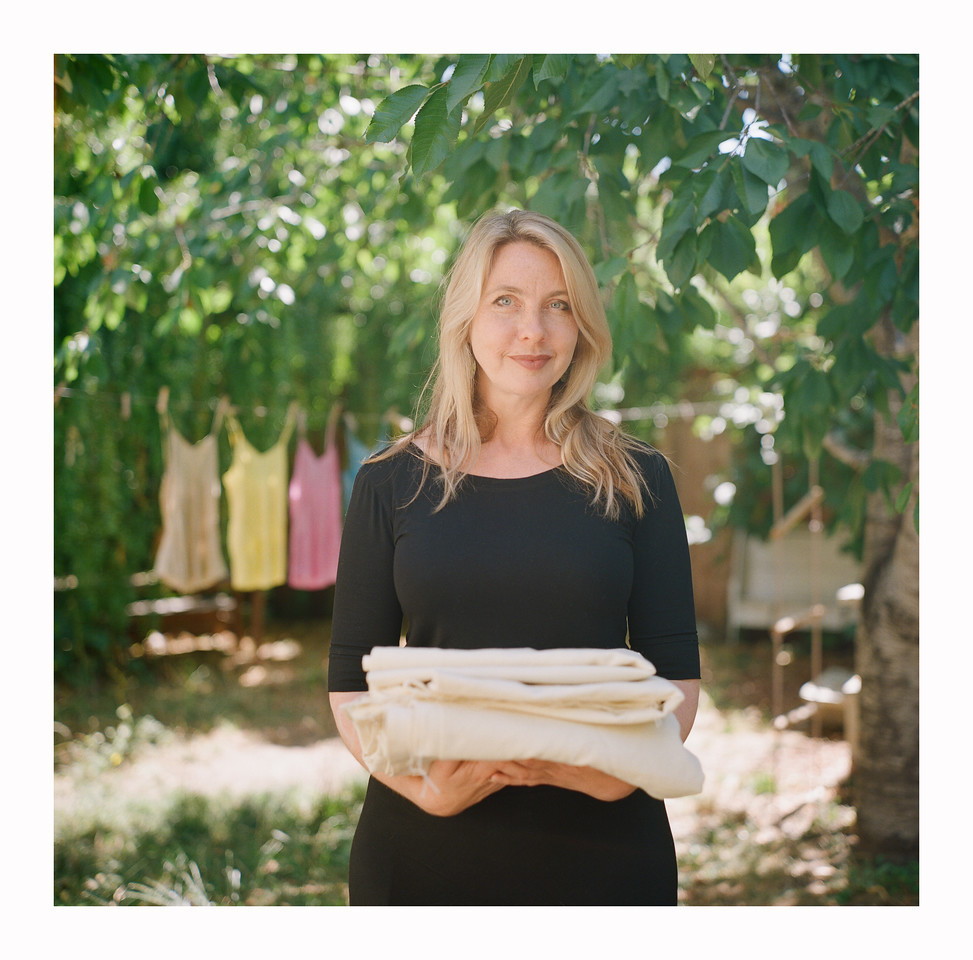
Yet color isn’t only linked to the plant itself, she points out. The environment also plays a key role. “I picked some mushrooms and infused a portion of them in our local water. The dye ended up being a pretty pink. But then I brought the same mushrooms to Occidental and the minerals in the water there created an entirely different color. It was the first time I saw the true interplay between all these different facets of the land.”
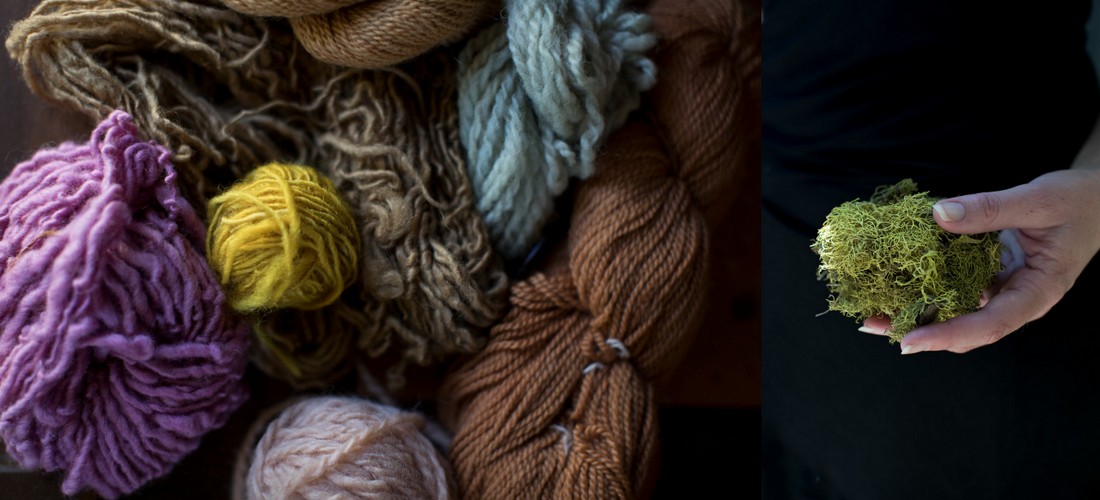
This understanding has presented Karen with a heightened appreciation of her hometown and new eyes to see the land around her. Every meadow, park, and roadside has become a possible foraging spot. Even her parents’ property is fair game, where she collects Omphalotus mushrooms, commonly known as the jack-o’-lantern mushroom, for a purple dye.
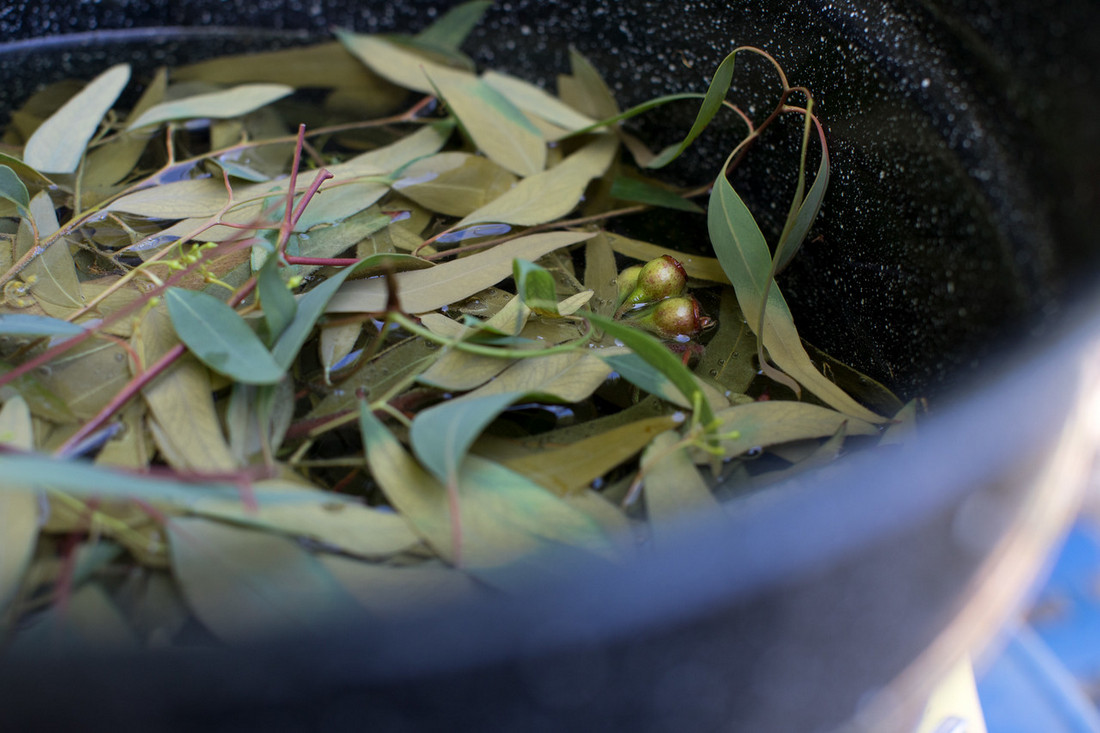
The changing of the seasons also offers opportunities for a shifting spectrum of available colors. During spring, Karen stocks up on the cheery blossoms of oxalis flowers, which create a delightful yellow dye. In the winter, the dye of the mushrooms she finds vary from deep amethyst to delicate lavender shades. It’s a chance to get outside any time of the year. “I had a typical 70’s childhood. Lots of freedom and time to explore. I hope I’m able to pass that on,” she says, returning to check on the simmering eucalyptus. Like many of her dyes, this batch will cook for a few hours, then rest and infuse overnight. In the morning, she’ll cook it for a few more hours and decide how to proceed from there. Dyes can range from needing a couple of hours to a few days to develop. After that, they’re ready to be used in her bespoke clothing line Local Dialect.

Karen’s signature designs — hand-dipped, jewel-toned silk camisoles — are neatly hung on a clothesline in her garden, drying slowly in the sun. “That one gets its color from the oxalis blossoms I mentioned,” she gestures to a citrine top. “And this one is made from red cabbage,” she says of a bright berry hue. Yet what Karen delights in most is what she calls ‘living color’ found only in natural dyes. “There are undertones in natural dyes that you simply cannot get with synthetics. For instance, one of my camisoles will look green to the eye, but will photograph pink. Working with natural dyes always surprises me,” she grins. The colors also inspire her other artistic inclinations. Coming from a graphic designer background, she has interests in writing, painting, and filmmaking. All of her creative pursuits are fueled and influenced by the colors she creates. So when purchasing a Local Dialect camisole, a customer can also buy a painting or photograph that complements or references the dye or botanicals that have been used.
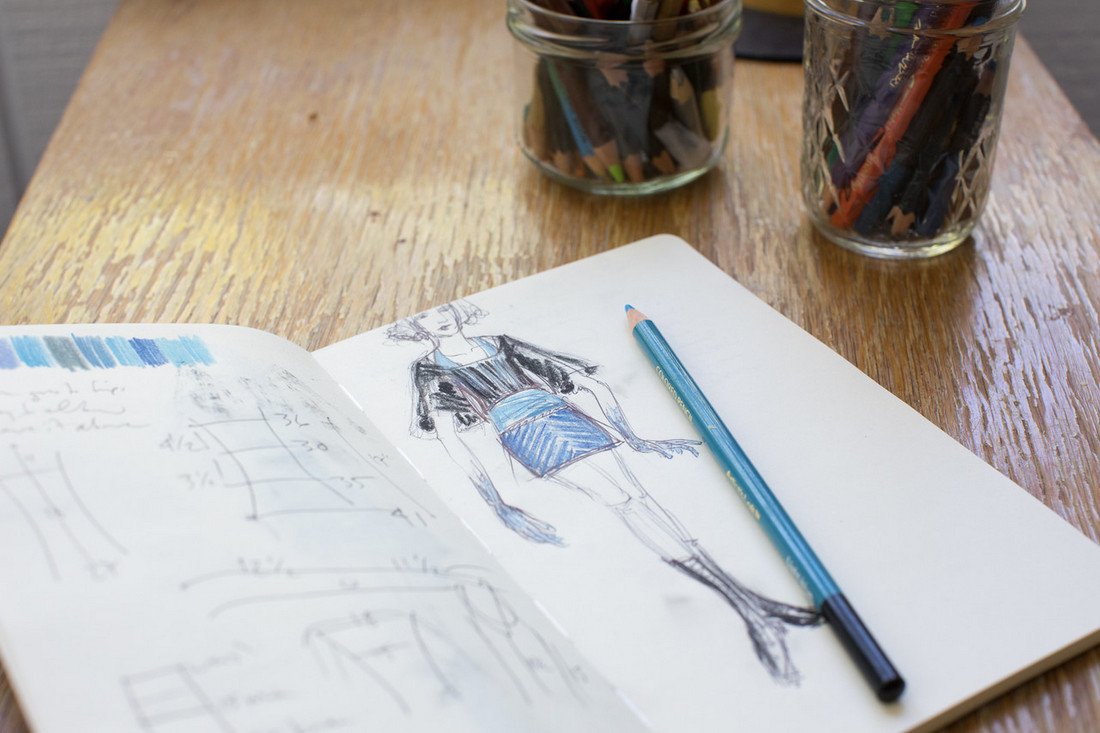
Karen plans and daydreams all her ideas in a notebook that she takes with her to cafes. She opens a page to reveal a sketch of a model walking down the runway, her hands dipped in indigo. “Inspiration for an upcoming fashion show,” she smiles. The fashion show is Fibershed’s Climate Beneficial Fashion Gala, where she’ll be showcasing custom pieces made from local fiber this fall. The fabric she’ll be using is this year’s Community Supported Cloth, a soft and high quality wool fabric produced locally from Lani’s Lana wool and Huston Textile Co. “It’s thicker than my usual silk and wool, so it’ll be a fun challenge,” she says. “I’m really honored just to participate. This event is such a special way to bring together artists throughout the Bay Area. From the material itself to dyes, design and history, local fiber has so many exciting aspects we’ll be exploring and celebrating.”
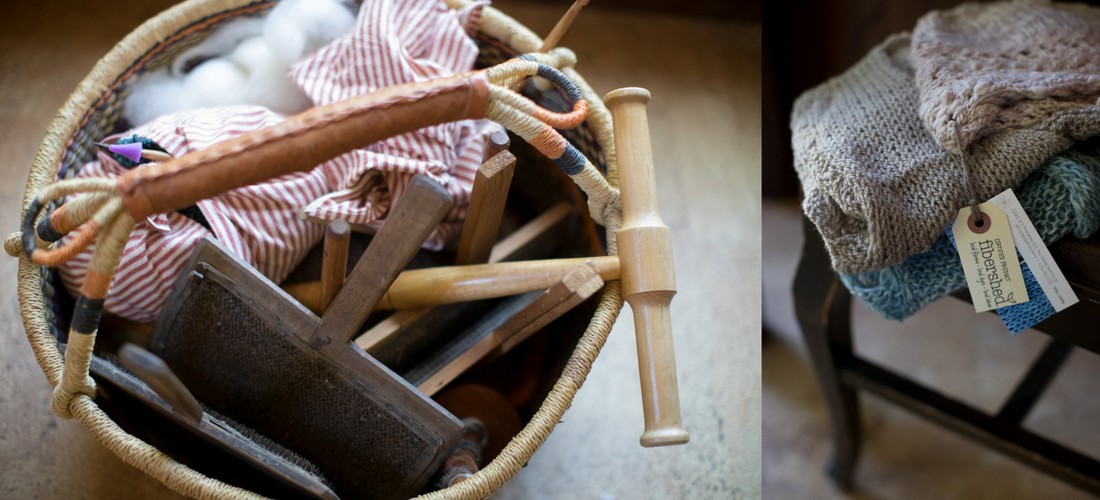
She pulls a fitted knit sweater, with romantic bell sleeves in a deep chocolate brown, over her head. It’s one of the designs she’s considering. There’s also a dusky pink skirt and a solar-dyed knit hat. The dye of mushrooms, she thinks, will feature heavily in her designs. “They’re unassuming, but reveal an incredible rainbow of colors,” she explains. In addition, she’s playing with incorporating a bit of pattern around the neckline of a camisole, and using fine gauge yarn for embroidery.
“I don’t create complicated fiber art. My pieces are simple, natural and classic. They’re wearable and not at all fussy. I want my customers to use and enjoy my clothing for a long time. For it to be part of their identity.”
It’s slow fashion at its core.
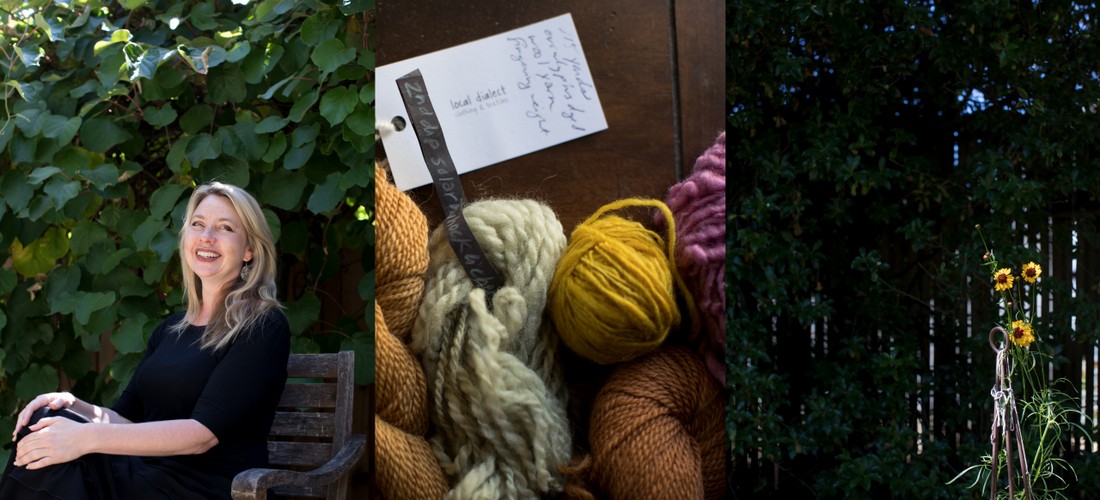
Karen leisurely returns to check on the eucalyptus once again. Mindfully, she stirs the leaves and replaces the lid.
Not fiery-red yet, but soon. Very soon.
To learn more about Karen Hess and Local Dialect, visit her website https://localdialect.net/





